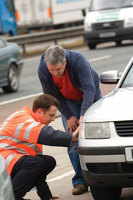Stay pumped up to avoid tyre failures

As the heatwave continues ahead of the great summer get-away, drivers are being reminded about the need to make sure their tyres are properly inflated, to avoid temperature induced tyre failures.
When tyres are under-inflated, excessive heat builds up within the tyre and makes them much more susceptible to suffering from a rapid deflation. These dramatic events can make the car extremely difficult to control, especially as they occur most frequently after prolonged periods of high speed running on busy motorways or A-roads.
Underlining the scale of the risk and dangers, figures from the RAC show that last year, its patrol crews attended more than 50,000 tyre related call-outs in July and August alone.
Stuart Jackson, chairman, TyreSafe, said: “We all love the hot weather – apart from our tyres if they’re not properly looked after. With July and August normally being the hottest two months of the year, car tyres are placed under increased stress from the higher temperatures like we’re currently experiencing. It really is important that motorists check their pressures at least once a month all year round, but even more so at this time of the year.”
Under-inflation, as well as being a huge safety issue from an increased risk of tyre failures and punctures, can also be financially costly because of a reduced tyre life and increased fuel consumption as the engine has to work harder to make the tyre turn.
RAC spokesman Simon Williams said: “In 2012 RAC patrols attended 344,000 call-outs for tyre and wheel jobs, making it our second biggest breakdown with 15 percent of our 2.3 million breakdowns. We urge everyone taking to the roads this summer to make sure their tyres are in good condition otherwise they risk spending some unwanted time on the hardshoulder or in a lay-by instead of on the beach.”
When checking their tyre pressures, drivers should ensure they are correctly inflated for the load being carried, such as additional passengers or holiday luggage. The correct settings can be found in the vehicle manufacturer’s handbook, inside the fuel filler cap or on a plate on the driver’s door sill. Alternatively TyreSafe has developed an on-line and iPhone app. Users simply enter their car registration number plate for the correct tyre pressure. It’s available to use and download by visiting tyresafe.org.




